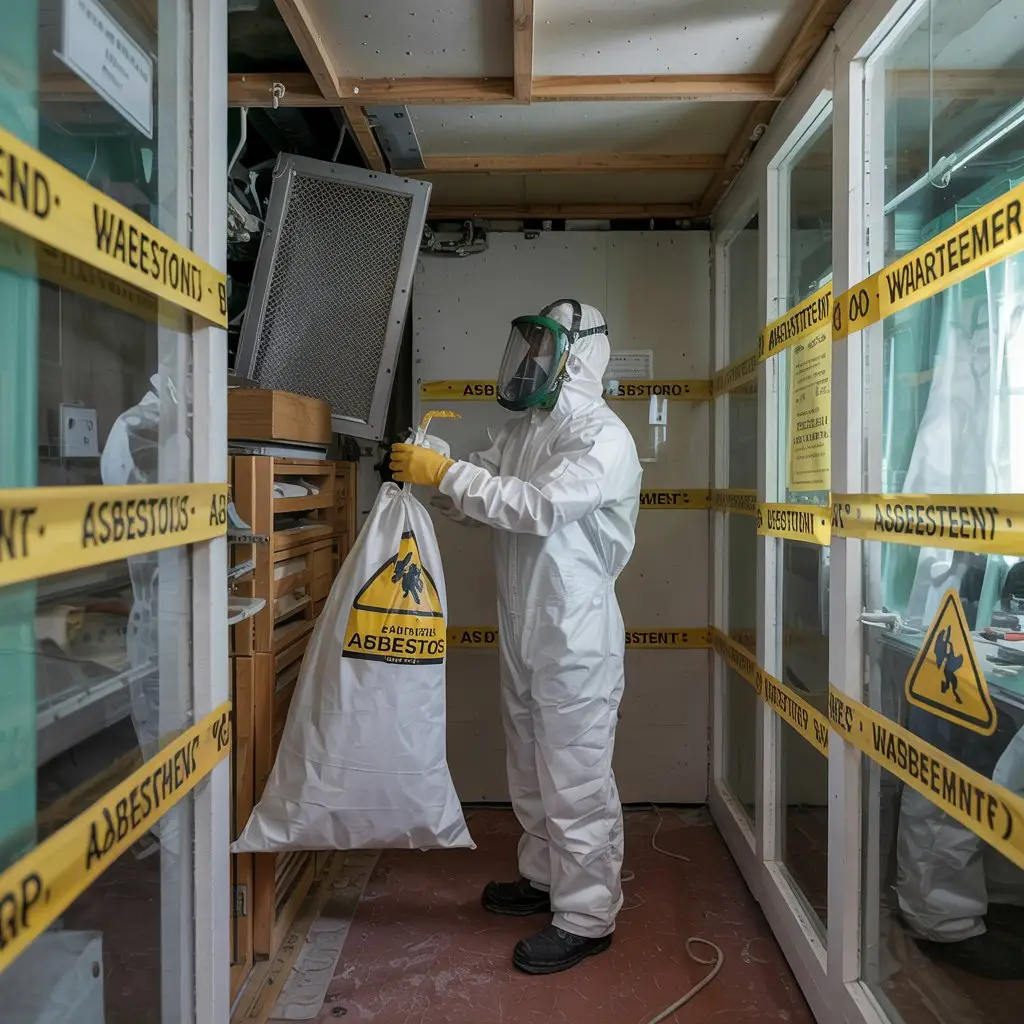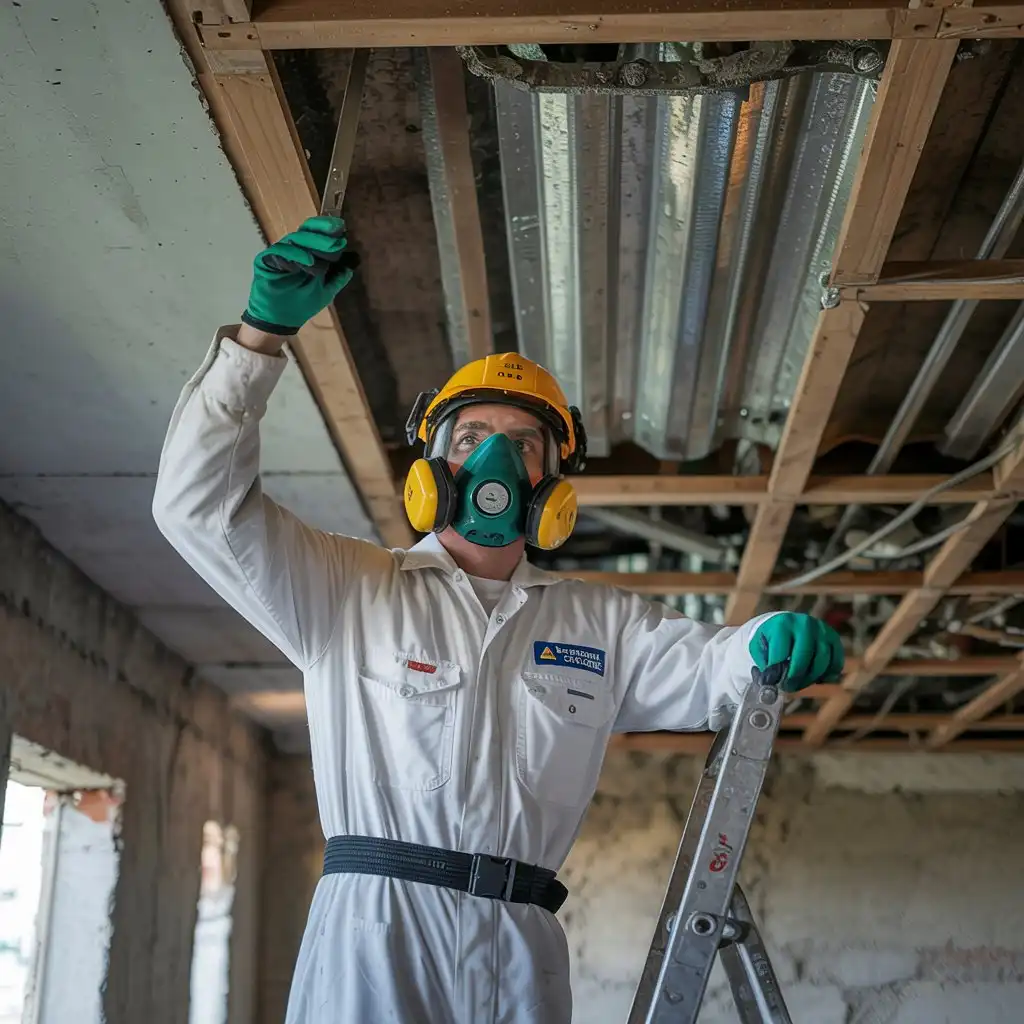Removing asbestos without the right training and tools is dangerous, illegal in many cases, and can lead to serious health risks and financial consequences. Hiring a professional for asbestos abatement ensures safety, legal compliance, and proper disposal.
Introduction: What Is Asbestos and Why It’s Still a Problem
Asbestos is a mineral fiber used in construction materials for insulation, fire resistance, and durability. It was popular throughout most of the 20th century. In many buildings built before 1990, asbestos is still present in materials such as pipe insulation, floor tiles, ceiling panels, cement sheeting, and roofing.
While asbestos use has declined, the materials remain in place in many homes, schools, offices, and factories. If these materials are disturbed, they release microscopic fibers. These fibers can be inhaled and cause severe health issues. The damage is not immediate, but the long-term effects are life-threatening.
Health Risks from Asbestos Exposure
Inhaling asbestos fibers is harmful. Once the fibers enter the lungs, the body cannot remove them easily. Over time, this leads to the development of serious diseases.
Key Health Issues Caused by Asbestos:
- Asbestosis – Chronic lung scarring that causes breathing difficulty.
- Lung Cancer – High risk, especially for smokers.
- Mesothelioma – A rare cancer affecting the lining of the lungs or abdomen.
- Pleural Thickening – Causes chest pain and reduced lung function.
These diseases often take decades to develop. Many people exposed to asbestos during home renovations or DIY work are unaware of the danger until it’s too late.
Where Asbestos Is Commonly Found
Asbestos was used in thousands of products. It is still present in older buildings, even if it’s not visible.
Common locations include:
- Attic and wall insulation
- Vinyl floor tiles and adhesive
- Roofing shingles and flashing
- Textured paints and ceiling coatings (e.g., popcorn ceilings)
- Hot water pipes covered with asbestos blankets or tape
- Cement sheets used for wall panels and exterior siding
If your building was constructed before 1990, assume there may be asbestos present until a certified inspection confirms otherwise.
Why DIY Asbestos Removal Is a Serious Risk
Asbestos removal without the correct approach is one of the most dangerous things a homeowner or contractor can do. Many people think they can handle it themselves with a dust mask and a garbage bag. This mindset leads to harmful exposure and contamination.
Risks of DIY Asbestos Abatement:
1. Fiber Release
Disturbing asbestos causes fibers to become airborne. These fibers settle in the lungs, clothing, and HVAC systems, spreading the danger.
2. No Legal Approval
In many regions, only licensed asbestos professionals are allowed to perform abatement. Removing asbestos yourself can result in legal penalties.
3. Incorrect Disposal
Asbestos waste cannot go in household trash. It must be sealed, labeled, and taken to a designated hazardous waste facility. Most people do not have access to these services.
4. Improper Tools and Gear
Most DIYers don’t own certified respirators, protective suits, or HEPA vacuum systems. Using standard vacuums or masks increases contamination.
5. Cross-Contamination
Handling asbestos without full containment spreads fibers throughout the house. This creates long-term exposure risks for others, including children and pets.
What a Professional Asbestos Abatement Team Provides

Professional abatement teams follow strict procedures to inspect, remove, and dispose of asbestos. They use certified equipment, comply with all regulations, and ensure the space is safe afterward.
Key Steps in Professional Asbestos Abatement:
1. Inspection and Testing
Certified inspectors take material samples and send them to accredited labs for asbestos testing. They identify the type and condition of the asbestos.
2. Work Area Containment
Professionals seal the work area using plastic sheeting and create negative air pressure using HEPA-filtered machines. This stops fibers from escaping.
3. Safe Removal
Workers wear full protective suits and respirators. They wet the asbestos materials to prevent dust, then remove and seal the waste in approved containers.
4. Decontamination
Before leaving the work zone, workers go through a decontamination process. Tools and gear are cleaned to avoid spreading fibers.
5. Disposal
The waste is transported in sealed, labeled containers to licensed hazardous waste facilities. A waste manifest is often required.
6. Final Air Clearance
After cleanup, the area is tested for airborne fibers. Air monitoring ensures the space is safe before anyone re-enters.
Legal and Regulatory Compliance
Governments regulate asbestos handling due to its health risks. In most areas, only certified contractors can legally remove asbestos. This protects not only the workers but also the community.
Key Legal Requirements:
- Notification of removal to local authorities
- Use of licensed professionals
- Air quality monitoring before and after
- Certified disposal methods
- Documentation and record-keeping
Failing to follow these rules can result in heavy fines and liability for future health issues in others.
Cost vs. Risk: Why Hiring a Pro Saves You More
Some property owners avoid hiring professionals due to the cost. However, the financial risks of not hiring a pro are far greater.
What You Risk by Avoiding a Professional:
- Paying for medical treatment from exposure
- Lawsuits from tenants, workers, or buyers
- Property damage from contamination
- Loss of property value
- Fines for illegal disposal or unlicensed removal
Hiring a professional reduces these risks and ensures the job is done right the first time.
When You Should Call a Professional

Do not wait for visible damage or symptoms. If you suspect asbestos, call a professional before doing anything else.
Call a professional if:
- Your building was built before 1990
- You plan to renovate or demolish
- You find damaged insulation or tiles
- A contractor or inspector recommends it
- You are buying or selling a property and need certification
Early action reduces health risks and simplifies the removal process.
Conclusion
Asbestos abatement is not a job for untrained individuals. The health risks are too high, and the legal consequences are serious. Professional contractors have the training, equipment, and approval needed to do the job safely and legally. Protect yourself, your family, and your property—hire a qualified asbestos abatement expert.
Contact Us For more
Email: [email protected]
Phone Number: +937 252-4724
Address: 2617 S Smithville Rd, Dayton, Oh, United States

Dr. Chris Cameron is a leading asbestos expert with over two decades of experience in occupational and environmental health. He holds a Ph.D. in Environmental Science and has worked extensively with government agencies, private sector organizations, and health and safety regulators to assess, manage, and mitigate asbestos-related risks. Dr. Cameron is widely recognized for his research on asbestos exposure, remediation strategies, and public health policy